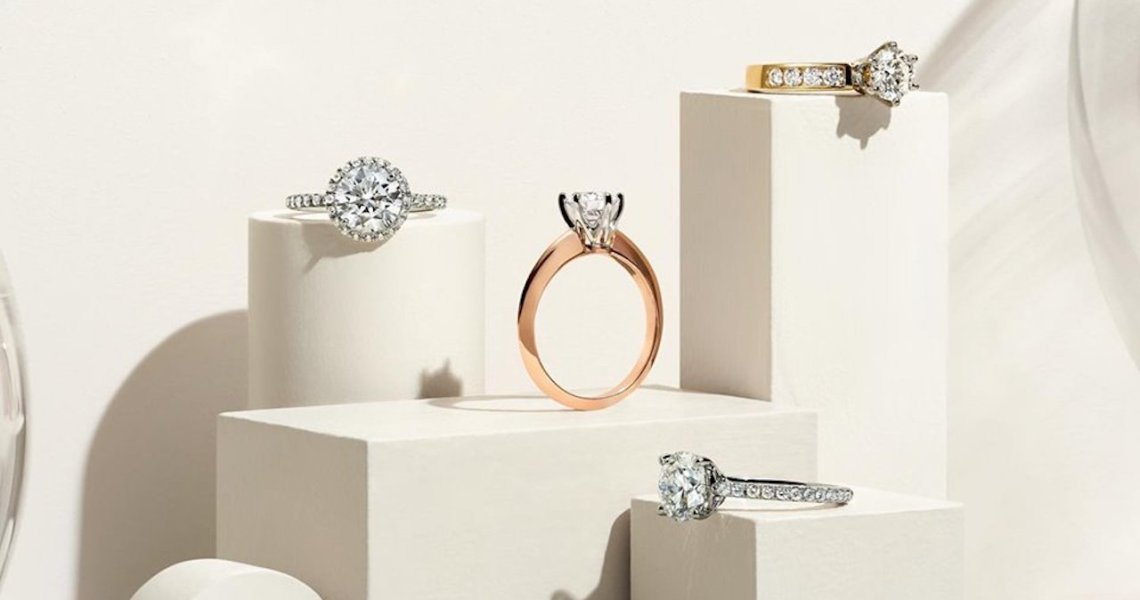Help us learn more about you and your job. Take our short audience survey now for a chance to win a $25 Amazon gift card.
As more millennials enter engagement and marriage territory, the direct-to-consumer lab-grown diamond industry continues to grow. Since 2016, brands from ALTR, Brilliant Earth, Couple, Ada Diamonds and more have popped up, targeting young, ethically minded customers likely concerned with the diamond industry’s notoriously corrupt practices. At the same time, diamond sales have been on the decline.
While lab-grown diamonds only make up about 3% of the $1.74 billion diamond industry, per Paul Zimnisky diamond analytics, they’re expected to continue stealing market share from traditional brands in coming years. By 2035, lab-grown diamonds are projected to be a $14.9 billion industry.
In July, legacy diamond company De Beers reported its lowest diamond sales since 2015, due in part to low demand. In the company’s 2018 Diamond Insight Report, the brand laid out the importance of millennial and Gen-Z shoppers to the future success of the diamond industry. However, lab-grown diamonds have essentially built their businesses on targeting these consumers, offering lower prices for larger carats.
“What you find in this new generation of millennials, which are the ones now purchasing wedding rings, is that they are less focused on a diamond as an investment and more focused on bigger purchases, like their first home,” said Olivia Cole, chief operating officer at creative collective GoDo Discovery Co. Cole and her firm recently worked with diamond company Spence, which sells both traditional (but ethically sourced) diamonds and lab-grown products. From her experience, Cole found that when customers actually had a chance to look at the diamonds side by side and compare price points, they were usually inclined to buy lab-grown.
“Under the microscope, they look the same. Eighty percent of all customers would go [for] the lab grown,” she said. But offering the chance to see the diamonds up close and personal is something direct-to-consumer brands have struggled with. If customers who want mined diamonds aren’t able to see just how similar a lab-grown option is, they won’t be inclined to opt for lab-grown.
Ad position: web_incontent_pos1
It’s a big challenge that DTC brands including Couple and Ada Diamonds have faced in their early days, but they’re starting to find solutions. Couple, founded in 2017, isn’t focused on moving into physical retail or even launching a pop-up shop at this stage. Rather, the company is creating experiences for customers via trunk shows held around the country.
“We use a lot of the traditional channels to create brand awareness. We’re on Instagram, running ads on Facebook and Google, we have a website, we do PR — but the trunk-show side is where we are doing some really interesting things,” said Jeff Brenner, co-founder of Couple. “Whether it’s a champagne and diamond lunch-and-learn or some sort of cupcakes and styling workshop, we are trying to set up a very approachable, non-intimidating environment where we can get in front of some potential customers and clients, and they can come and see what a lab-grown diamond looks like.”
Couple also offers a concierge service for engagement ring purchases, allowing customers to call, text, video chat or meet with a real employees to talk about what kind of ring they want, get any questions answered and, in some cases, see what the rings look like up close.
Ada Diamonds, launched in 2016, has showrooms in San Francisco and New York City, making it a bit easier for the company to get its lab-grown diamonds in front of customers. And while many brands in the space focus on pushing the value aspect of buying lab-grown — customers are typically told that buying lab-grown means getting a bigger, better stone at a lower cost — Ada Diamonds has found that its biggest opportunity to grow in such a crowded market has been in focusing on high-end products.
“We try and provide a luxury 5th Avenue experience without necessarily having to pay 5th Avenue prices,” said Lindsay Reinsmith, co-founder at Ada Diamonds. “We have chosen to work with only about the top 15% of the quality of laboratory grown diamonds. That focus around custom, high-end jewelry is what has allowed our business to grow.” The brand declined to share revenue.
Ad position: web_incontent_pos2
While DTC lab-grown diamond companies are, as a whole, targeting millennials, they’re drawing in customers outside of that demographic, as well. Couple has noticed that some customers aren’t coming to them to buy their first wedding ring but rather to upgrade a rings after decades of marriage.
“Maybe, at the time, they didn’t have access to the funds to get as big of a ring as they maybe wanted to,” said Brenner. “It’s been amazing to see a whole different audience looking to upgrade. They are going for the 3- and 4-carat rings.”




